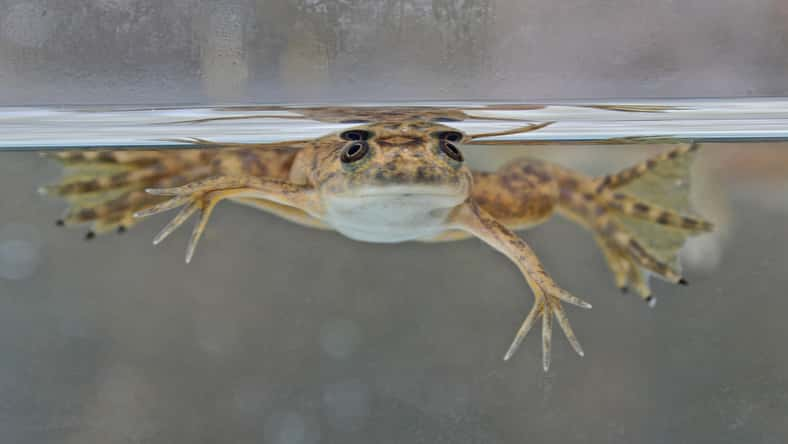These Researchers Were Able To Trigger Limb Regeneration In Frogs: Their Next Hope Is To Test This Treatment On Mammals

Nearly two million people in the United States live with limb loss, with causes ranging from trauma to diabetes.
While regrowing limbs has been a phenomenon limited to superheroes and starfish, scientists at Tufts University and Harvard University’s Wyss Institute are making substantial strides in regenerative medicine.
The research team studied adult African clawed frogs, who– like humans– are unable to regenerate their limbs.
Miraculously though, the researchers discovered how to kick-start regrowth in their newly published Science Advances study.
They first mixed five drugs and placed the substance in a silicone wearable bioreactor dome. Then, the dome was sealed over the frog’s limb stump for twenty-four hours.
This short exposure time triggered an eighteen-month regrowth period that resulted in an almost-functional leg.
David Kaplan, a co-author of the study, explained how the dome created an ideal environment for regrowth.
“Mammals and other regenerating animals will usually have their injuries exposed to the air or making contact with the ground. And, they can take days to weeks to close up with scar tissue,” Kaplan said.
“Using the BioDome cap in the first twenty-four hours helps mimic an amniotic-like environment which– along with the right drugs– allows the rebuilding process to proceed without the interference of scar tissue.”

Nathan – stock.adobe.com
Sign up for Chip Chick’s newsletter and get stories like this delivered to your inbox.
Each drug that made up the cocktail served its own unique purpose: lowering inflammation, curbing scar production, and encouraging new nerve, blood vessel, and muscle growth.
According to the study, the frogs’ regrown limbs could move and respond to stimuli. The treated frogs were even able to swim like “normal.”
Nirosha Murugan, the first author of the study, said, “It’s exciting to see that the drugs we selected were helping to create an almost complete limb.”
“The fact that it required only a brief exposure to the drugs to set in motion a months-long regeneration process suggests that frogs and perhaps other animals may have dormant regenerative capabilities that can be triggered into action.”
The next step in the team’s research is testing how this dome treatment might apply to mammals.
To read the complete scientific study, visit the link here.
If true crime defines your free time, this is for you: join Chip Chick’s True Crime Tribe.
More About:Human Interest





